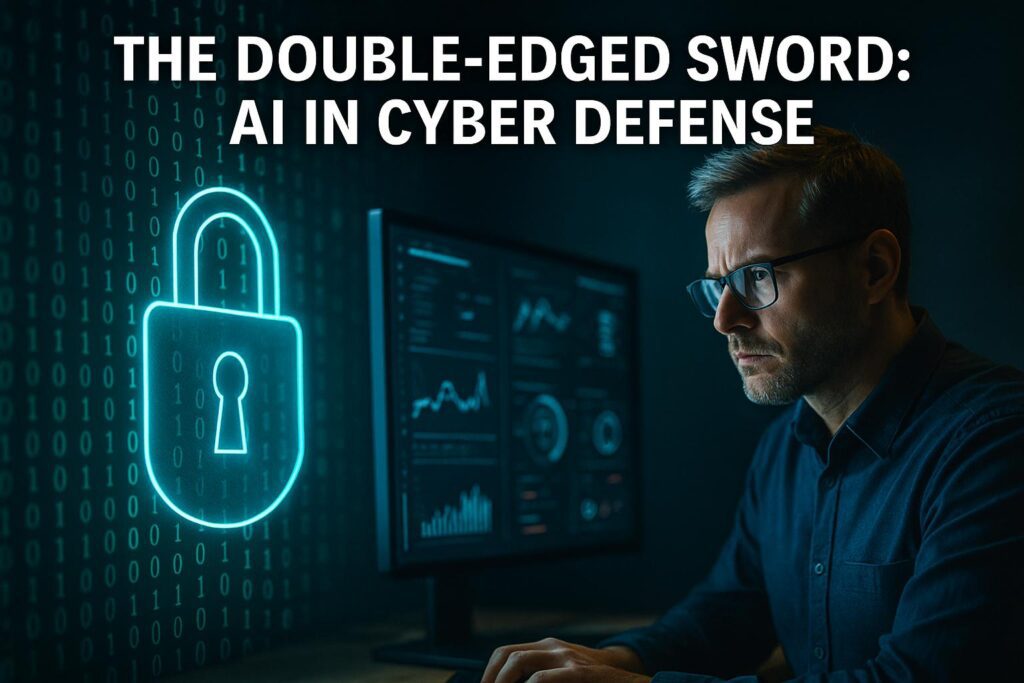Artificial Intelligence (AI) has long been hailed as a game-changer for technology, helping to automate complex tasks, optimize operations, and predict outcomes with uncanny accuracy. But while AI has bolstered defenses in the cybersecurity world, it has also armed cybercriminals with powerful tools to launch more efficient and sophisticated attacks.
Welcome to the era of AI-powered cyberattacks—a landscape where machines help hackers outsmart humans and traditional defense systems alike.
In this post, we’ll unpack what AI-driven cyberattacks look like, why they’re increasing in frequency, and how you can protect yourself or your business against this new breed of threats.
What Are AI-Powered Cyberattacks?
AI-powered cyberattacks are malicious activities that use machine learning (ML), deep learning, or natural language processing (NLP) to automate, enhance, or scale criminal operations in cyberspace. These technologies help attackers:
- Bypass security systems more effectively
- Mimic human behavior (think deepfake scams or phishing)
- Harvest data at scale
- Adapt in real-time to security protocols
Unlike traditional cyberattacks, which often follow static patterns, AI-driven attacks are dynamic. They can learn, evolve, and re-target based on responses from the systems they are attacking.
Real-World Examples of AI in Cybercrime
1. Deepfake Scams
Cybercriminals now use AI to generate realistic audio and video to impersonate CEOs or executives, tricking employees into transferring funds or revealing sensitive information.
In 2019, a UK-based energy firm lost $243,000 after a deepfake voice was used to mimic the CEO’s speech in a phone call.
2. AI-Powered Phishing Emails
Conventional phishing messages often use vague wording and grammatical mistakes. But with AI-generated content, phishing emails are now more personalized and grammatically correct, increasing their success rate.
3. Evasive Malware
Some malware now uses AI to determine when to execute—like only running when it detects no antivirus software or sandboxing environment, making it harder to analyze.
Why AI-Powered Cyberattacks Are Increasing
- Accessible AI tools: Open-source AI models and SaaS platforms have made it easier than ever for bad actors to build and deploy intelligent attacks.
- Data abundance: With so much personal and organizational data online, AI has plenty of material to learn from.
- Defensive lag: Security systems are still catching up. Traditional rule-based defenses often can’t keep pace with adaptive AI threats.
“AI has democratized cyberattacks. What once required expert-level knowledge is now available with a few clicks and a GPU.” –
Cybersecurity Ventures
The Double-Edged Sword: AI in Cyber Defense

Fortunately, AI is not only a threat—it’s also a shield. Organizations are increasingly using AI in cybersecurity tools to defend against both traditional and modern threats. Here’s how:
AI-Based Threat Detection
AI models analyze network traffic in real-time, identify anomalies, and flag threats much faster than human analysts. Tools like IBM QRadar and CrowdStrike Falcon use machine learning to detect behavior-based threats.
Predictive Security
AI can help forecast where the next attack might come from. By analyzing past data, it can predict vulnerabilities, patch weak spots, and suggest policy changes.
Automated Incident Response
Platforms like Palo Alto Networks’ Cortex XSOAR can automatically respond to incidents, reducing response time and minimizing damage.
The Challenges of Using AI in Cybersecurity
1. False Positives and Negatives
The effectiveness of AI systems depends heavily on the quality of their training data. Poor datasets can lead to missed threats or too many false alarms, which can overload security teams.
2. Adversarial AI
Cybercriminals use adversarial examples—inputs designed to trick AI models—into making incorrect predictions, essentially hacking the AI itself.
3. Lack of Transparency
AI systems can act as a “black box,” making it hard to understand why a certain threat was flagged or missed, which complicates audit trails and accountability.
Navigating the New Frontier: How to Prepare
For Individuals:
- Use MFA (Multi-Factor Authentication) wherever possible.
- Educate yourself about phishing and social engineering.
- Update software and systems regularly to avoid exploits.
For Businesses:
- Invest in AI-powered cybersecurity platforms.
- Conduct regular AI-focused penetration testing.
- Create a response plan specifically tailored for AI-related threats.
For Developers and IT Teams:
- Build with security in mind from the start.
- Test for adversarial vulnerabilities in any deployed AI systems.
- Stay informed via MITRE ATT&CK and
NIST’s Cybersecurity Framework.
The Role of Regulation and Ethics
As AI continues to shape the cyber threat landscape, regulations will play a vital role in maintaining digital safety.
Key Regulatory Movements:
- EU AI Act: Proposes to regulate high-risk AI, including AI in cybersecurity.
- US Executive Order on AI (2023): Sets frameworks for ethical use of AI in national security.
There’s also a growing call for tech companies to build “ethical AI” that’s explainable, secure, and aligned with societal values.
Conclusion
The rise of AI-powered cyberattacks represents one of the most pressing challenges in today’s digital landscape. These attacks are faster, smarter, and more deceptive than anything we’ve seen before—and they’re only going to get more sophisticated.
However, with the right awareness, tools, and strategies, we can also use AI to defend against AI. The key is to stay informed, stay updated, and never assume your current security setup is “good enough.”
Remember, in cybersecurity, complacency is the real vulnerability.



